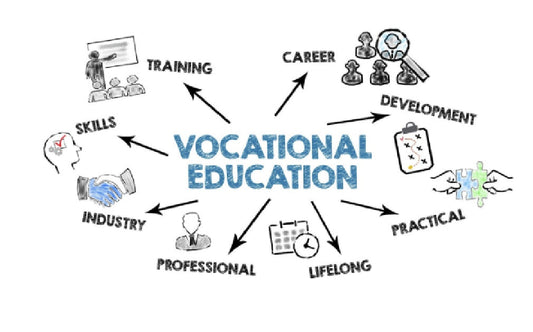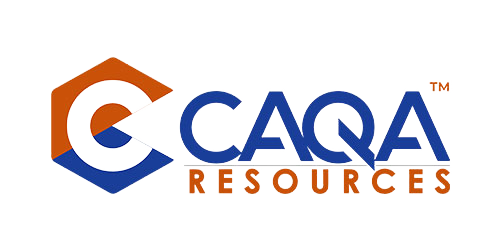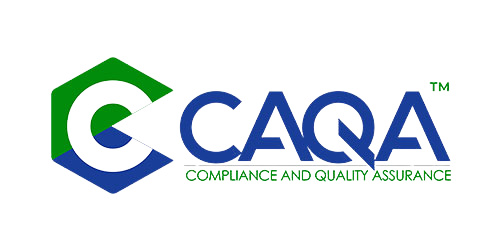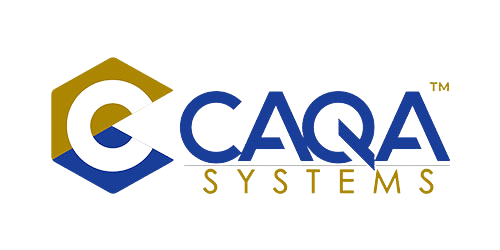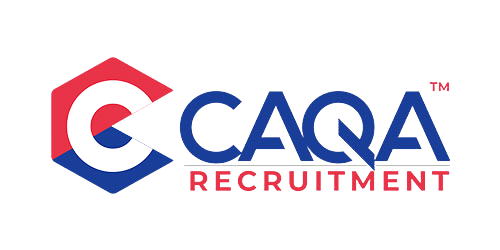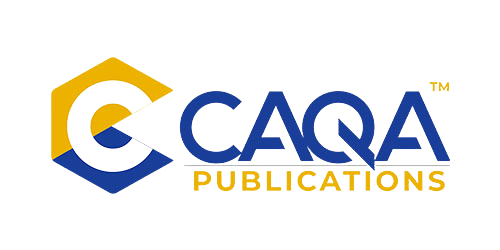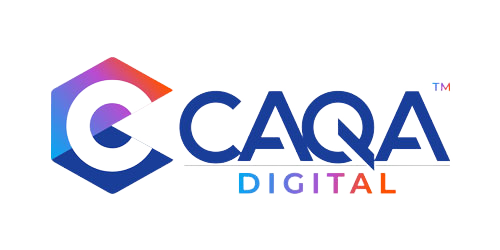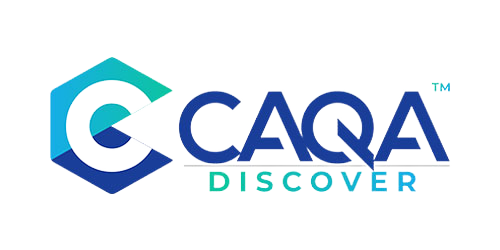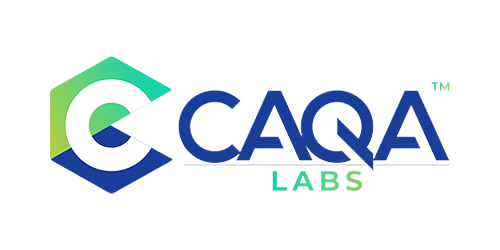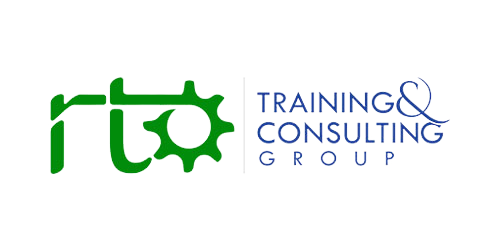Why this guide matters now
Australia’s skills pipeline depends on trust. Employers need to believe that a qualification means a person can do the job safely and well. Students need assurance that the course they buy is real, delivered properly and leads to authentic outcomes. Regulators need a fast, defensible way to triage risk and intervene before harm spreads. Over 2024 and 2025, strengthened visa integrity rules, sharper risk priority statements, and a surge of tip-offs have made one fact plain. There are still operators who are not genuine. The good news is that non-genuine provision leaves fingerprints. If you know where to look, you can detect it quickly and with evidence.
This field guide is written for practical use in Australia. It gives a sequenced set of checks that any regulator, employer or student can apply. Each step points to authoritative registers, legal obligations and regulator guidance, so that a single afternoon of disciplined verification can move you from uncertainty to a defensible view. The method is simple. Start with the registers. Move through marketing legality. Test agent behaviour. Align what you see with Visa Integrity settings. Confirm tuition protection. Check probity and control. Walk the floors to test delivery reality. Validate certification integrity. Scan regulatory history. Triangulate recruitment patterns with policy shifts. Verify workplace governance where placements are mandatory. Analyse data around loans and fees. Close by comparing the provider’s public posture to the expectations of the 2025 Standards and the regulator’s declared risk priorities. If at any step you hit resistance or contradiction, you have found a risk that should not be ignored.
Step 1: Confirm the legal right to deliver what is advertised
Every genuine provider starts with lawful registration and a true scope of registration. The fastest way to check is to search the National Training Register for the provider’s exact legal name or RTO code and then open its scope of registration. The scope must list the specific qualification, skill set or unit that appears in the marketing. If a product is not listed on that scope, it is not authorised, regardless of what the website claims. This is a binary test. Either the product is on the RTO’s scope on training.gov.au, or it is not. If it is not, you have already found a primary risk signal.
If the provider is recruiting student visa holders or talking to offshore students about onshore study, you must also search the official CRICOS register. A genuine provider will have a current CRICOS listing for the specific course, at the specific campus, and for the claimed delivery mode. The provider’s CRICOS code must appear consistently and clearly in marketing, offers and written agreements because the National Code requires marketing to be accurate, professional and ethical. If a website markets a CRICOS course that you cannot find on the CRICOS register for that campus, treat that as a primary risk signal and escalate.
The National Code’s marketing standard exists to protect students and the sector’s reputation. It prohibits false or misleading promotion and requires the provider’s name and CRICOS code to be clearly identified on all material used to market courses to overseas students. Any omission of an RTO number, any mismatch between scope and marketing, or any attempt to imply CRICOS approval where none exists moves the needle towards non-genuine conduct.
Step 2: Test marketing legality and use of protected marks
Non-genuine operations often give themselves away in the way they sell. Under the National Code, providers must ensure marketing is not false or misleading. The regulator’s guidance is unambiguous that providers and their agents must avoid guarantees of outcomes such as visas, migration or employment that are outside the provider’s control. If you see claims of guaranteed visas, permanent residency, “earn while you learn” income promises, or course durations compressed far below typical volumes without credible, provider-specific evidence, you are seeing risk that aligns with the regulator’s public warnings.
Look closely at the Nationally Recognised Training logo. Its use is tightly controlled. It can only be used in direct connection with a nationally recognised training product that is on the RTO’s scope and must not appear on corporate stationery, generic marketing trinkets or non-accredited short courses. If the logo is splashed across everything the business does, regardless of whether a training product is nationally recognised, the provider is misusing a protected mark and creating a false impression of accreditation. That is a hallmark of non-genuine advertising.
ASQA’s own guidance makes the point that RTO marketing must include the RTO number and, where a specific training product is referenced, the correct code and full title. Absence of the RTO code or misuse of the NRT logo is not a clerical error. It is a compliance breach that correlates strongly with bigger problems in delivery and assessment.
Step 3: Examine education-agent behaviour and the provider’s control of it
Agent conduct is one of the strongest predictors of provider genuineness. Under Standard 4 of the National Code, registered providers must ensure their education agents act ethically, honestly and in the best interests of overseas students, and must monitor agent performance. ESOS obligations make it the provider’s duty to manage agents. A provider that cannot evidence pre-engagement checks, monthly performance reviews, remedial actions and contract termination for misconduct is not meeting the baseline. That is a red flag.
The policy context has sharpened these expectations. The 2024 ESOS Amendment (Quality and Integrity) reforms expanded transparency and information-sharing powers and created stronger levers to curb exploitative onshore “poaching” of newly arrived students through commission incentives. If a recruitment funnel depends on unusually high or opaque commissions, rapid onshore switching inducements, or large clusters of students channelled by a single intermediary without public performance data, you should test governance and contracts immediately. Ask to see the agent register, due diligence reports, performance dashboards and recent termination actions. If a provider resists disclosing these or claims not to track them, the risk of non-genuine operations rises.
Step 4: Align the provider’s story with visa-integrity settings
Visa policy is not background noise. It is a real-time integrity filter. On 23 March 2024, Home Affairs replaced the Genuine Temporary Entrant test with a Genuine Student requirement for new student visa applications. On 10 May 2024, the minimum funds requirement for a student visa was set at AUD 29,710 for individual students. Genuine providers adjusted their pre-enrolment advice, screening and written agreements to align with these settings. Non-genuine operators did not. If you see marketing that centres on work rights over study, downplays attendance or progress obligations, or implies that study is merely a pathway to migration, you are seeing a misalignment with current visa policy and a breach of the spirit of the National Code.
A genuine provider’s recruitment and agent communications should explicitly reference the Genuine Student requirement and explain progress and attendance duties. A non-genuine operator’s pipeline often shows abnormal visa refusal or cancellation patterns by source country or agent channel. That pattern is a strong indicator for deeper checks and, for regulators, for targeted performance assessment.
Step 5: Confirm tuition protection and student default safeguards
Tuition protection is the backbone of student safety. For international students and for domestic students using VET Student Loans at private providers, the Tuition Protection Service provides placement into an equivalent course or a refund or loan re-credit where a provider defaults. A genuine provider embeds this information in public pages, written agreements and student briefings, and can explain the timelines and processes. A non-genuine provider tends to obfuscate or omit TPS information and offers vague or non-compliant refund terms. If a provider cannot produce a compliant default plan or refuses to explain TPS pathways, treat that as a significant risk.
VET Student Loans add further accountability. Approved providers must report accurate and timely data through TCSI. Six-monthly program statistics are published under the VSL Act. Patterns of late or error-prone reporting, unexplained anomalies in fee statements or reluctance to explain census dates and re-credit rights are not administration quirks. They often correlate with funding-fraud typologies such as duplicate invoices, withdrawal clusters near census and inflated credit transfer counts designed to create the appearance of throughput. Genuine providers are transparent about these mechanics and reconcile enrolment, withdrawal and completion data with invoices and TCSI submissions.
Step 6: Run basic probity checks on the controlling entity and people
Bad-faith operations often hide behind shells, shifting names or shadow controllers. An ABN Lookup search should match the trading name in marketing with the legal entity on the RTO registration. Status should be Active. GST registration should make sense for the scale of operations. Recent name or director changes should be consistent with public governance disclosures. If you cannot reconcile these, ask why. Then, check the ASIC-banned and disqualified register to see whether any current or recent controllers are disqualified. Frequent shell churn, disqualified controllers behind the brand, or material mismatches between what is disclosed to students and what is filed publicly are all bad-faith indicators.
Step 7: Inspect delivery reality on the ground and online
Non-genuine provision looks different in the real world. For VET cohorts that include international students, timetables must align with course contact hours and progression rules. Attendance or engagement must be tracked in a way that matches sector requirements. Assessment evidence must be authentic and retained. Facilities and resources must be adequate for the training package or accredited course. ASQA’s Practice Guides under the 2025 Standards set out clear expectations for training, assessment, facilities, resources and equipment. If a site visit reveals empty rooms, borrowed or generic assessment tools, recycled evidence, or compressed schedules inconsistent with the volume of learning, assume the risk is real.
Genuine providers can show trainer and assessor competence that meets the Credential Policy, practical supervision arrangements, realistic class sizes, secure assessment systems and verifiable work placement partnerships. Non-genuine providers rely on casual “trainers” who lack current competencies, unverifiable placements, or remote delivery arrangements that do not meet learner support expectations under Quality Area 2. The Practice Guides translate these expectations into audit questions that you can use in a single visit.
Step 8: Validate certification and USI compliance
There is a fast, concrete test for certification integrity. Unless a learner is exempt, an RTO may only issue a qualification or statement of attainment after the learner has provided a verified Unique Student Identifier or the RTO has applied for one on the learner’s behalf. If a provider promises to issue certificates without a USI or issues them within implausibly short timeframes after enrolment, you are looking at a strong fraud signal. A genuine provider can show USI verification logs and can produce AQF documentation that includes all mandated identifiers. A non-genuine provider often misuses the NRT logo on documentation, omits mandatory fields or issues “certificates” that do not reconcile with a USI transcript.
Step 9: Scan regulatory history and public enforcement footprints
Do not stop at the provider’s website. ASQA publishes selected regulatory decisions and maintains student-facing pages for cancelled qualifications following regulatory action. Its public tip-off portal also shows how concerns feed into investigative workflows. A quick scan for the entity, its trading names and its controllers will often surface cancellations, suspensions, written directions or rejected applications. A trail of enforcement, a pattern of complaints and sudden liquidations followed by re-emergence under a new shell should be treated as a decisive warning.
ASQA’s declared risk priority on non-genuine providers and bad-faith operators sets the triage lens. It names fraudulent issuance, funding fraud, phoenixing, border integrity breaches and infiltration by serious and organised crime as critical threats, and it lists operational signals such as enrolment spikes without matching capacity, mass completions on unrealistic timelines, recycled assessment evidence, agent clusters without due diligence and attendance data that contradicts delivery plans. If your checks reveal patterns that match these signatures, your risk rating should rise accordingly.
Step 10: Triangulate recruitment patterns with live policy and compliance shifts
Recruitment data rarely lies. Over 2024 and 2025, the shift from GTE to the Genuine Student requirement and the increase in financial capacity settings changed who could obtain a visa and under what conditions. Media and government updates documented enforcement attention on exploitative recruitment practices and warned selected providers to clean up. If a provider’s growth is driven by fast onshore transfers, steep commission ladders, or sudden spikes that are not accompanied by trainer hiring, facility expansion and timetable growth, assume risk until the provider produces hard evidence of delivery and outcomes. Genuine providers publish how they meet Standard 1 obligations and how they are managing GS settings without compromising educational quality.
Step 11: Verify workplace governance for industries that require placements
In sectors such as construction, care, disability and early childhood, placements and supervised practice are not optional. A genuine provider can produce current insurance certificates, supervisor agreements, verification templates and a roster of qualified assessors aligned to the specific units being assessed. They can explain how the assessment aligns with workplace tasks and safety requirements and can produce evidence that placements occurred with appropriate supervision and feedback. Non-genuine providers often cannot. They resist third-party observation of assessments, cannot show end-to-end placement governance and lack transparent complaints and appeals handling aligned to the Practice Guides for Quality Area 2. That pattern should be treated as high risk.
Step 12: Analyse data around loans, fees and reporting
The numbers tell a story. VET Student Loans providers must report through TCSI and are subject to published statistics and notices that set out data quality expectations and penalties for false or misleading information. If a provider’s reporting is chronically late, riddled with validation errors or inconsistent with invoices, ask why. If withdrawals cluster around census dates, if fee statements are inconsistent, or if there is unusual “credit transfer” inflation, you may be looking at revenue recognition practices that mask delivery failure. Genuine providers will walk you through their data lineage, show you validation artefacts and reconcile datasets if they cannot, lift the risk rating.
Step 13: Compare public posture with the 2025 Standards and Practice Guides
From 1 July 2025, the revised Standards for RTOs came into full effect. They shift the focus to outcomes and evidence across quality areas that include training and assessment, student support, workforce competence and governance. ASQA has published final Practice Guides that translate expectations into observable behaviours and auditable proof, including how providers manage agents, third parties, risk and continuous improvement. A genuine provider’s public posture will match these expectations. They will publish governance frameworks, risk registers, continuous-improvement cycles and workforce competence statements, and they will be able to show the evidence behind these words. A non-genuine provider will offer generic, undated policies, inconsistent public statements and staff who cannot explain ESOS, National Code or the Standards.
The Practice Guides also reflect new realities of evidence. Assessment integrity now relies on granular student-level audit trails, including digital platform logs, assessor comments and learner progression timelines. ASQA has flagged the use of analytics to detect mass completions, anomalous assessment timing and recycled evidence across cohorts, especially where providers have moved to cloud-based SMS or LMS platforms without proper controls. If you audit a sample of assessment records and find bulk uploads at identical timestamps, reused files or templated responses across many students, you are not looking at an administrative quirk. You are looking at an integrity failure.
Putting it together: a single-sitting composite screen that works
There is a simple way to combine these steps into one sitting. Begin by checking the RTO’s scope on training.gov.au and match it to the specific product being sold. If international students are in scope, verify the CRICOS course listing, the campus and the delivery mode. Scan the website for lawful use of the NRT logo and for the presence of the RTO code in marketing. Read the words used. If you see guarantees of visas or improbable promises, you already have cause to question. Move to the agent's next. Ask for the agent register and performance data, and check that the provider manages agents against Standard 4. Then compare messaging to the Genuine Student requirement and financial capacity settings so you know the recruitment lens is honest. Review the tuition protection content and the written agreement. If VET Student Loans are involved, ask to see TCSI validation reports and how census dates, withdrawals and re-credits are explained to students. Run ABN and ASIC checks for alignment and disqualifications. Visit or request a virtual walk-through of facilities and resources aligned to specific units. Ask to see trainer credentials, supervision plans and placement agreements. Pull a small sample of assessment records and look for platform logs, assessor comments and progression timelines. Finally, search for regulatory decisions and cancellations connected to the entity or its controllers and note anything that suggests a pattern of phoenixing or non-compliance. At each step, you are collecting observable facts that either support or contradict the provider’s claims.
What to do when a provider fails the checks
If you are an employer, do not place students or hire graduates until the provider produces the missing evidence. If you have already hired graduates and regulatory action suggests certification risk, ask for USI transcripts or verification and consider a practical re-validation pathway. If you are a student, seek advice through the Tuition Protection Service and your state or territory advice services. If you are a regulator or compliance manager, suspend issuance for implicated cohorts, preserve evidence, notify the appropriate agencies and move to a root cause analysis with time-bound corrective actions. The quickest way to secure the sector is to act as soon as the evidence warrants it.
Why these tests work
Non-genuine providers have three problems that genuine providers do not. First, their claims do not match official registers. Second, their marketing relies on implications and promises that the law forbids. Third, their systems do not generate the evidence that outcomes-based regulation now requires. The tests in this guide are built to exploit those gaps. They rely on public registers, regulator guidance and documentary proof that can be verified. They also recognise that today’s regulatory posture is data-driven. ASQA’s tip-off service, its quarterly reporting, and its Practice Guides paint a consistent picture of what will draw scrutiny. If your checks detect the same patterns, you can act with confidence, and you can defend your actions when challenged.
The bottom line for Australia’s VET market
The majority of providers are genuine and do the right thing, often under difficult conditions. They deserve a market that rewards integrity. That will only happen if employers, students and regulators use the same evidence-based screens to identify and isolate the outliers. Start with scope and CRICOS. Read marketing against the law. Probe agent behaviour. Align with visa settings. Confirm tuition protection. Run probity checks. Walk the delivery floors. Validate certification against USI and documentation rules. Scan regulatory history. Triangulate recruitment patterns. Verify workplace governance. Analyse data around loans and fees. Compare public posture to the 2025 Standards and Practice Guides. When a provider resists transparency on any one of these elements, treat it as a live risk until they produce verifiable evidence. The sector has the tools. Using them consistently is how we protect students, the workforce and Australia’s reputation for quality.





